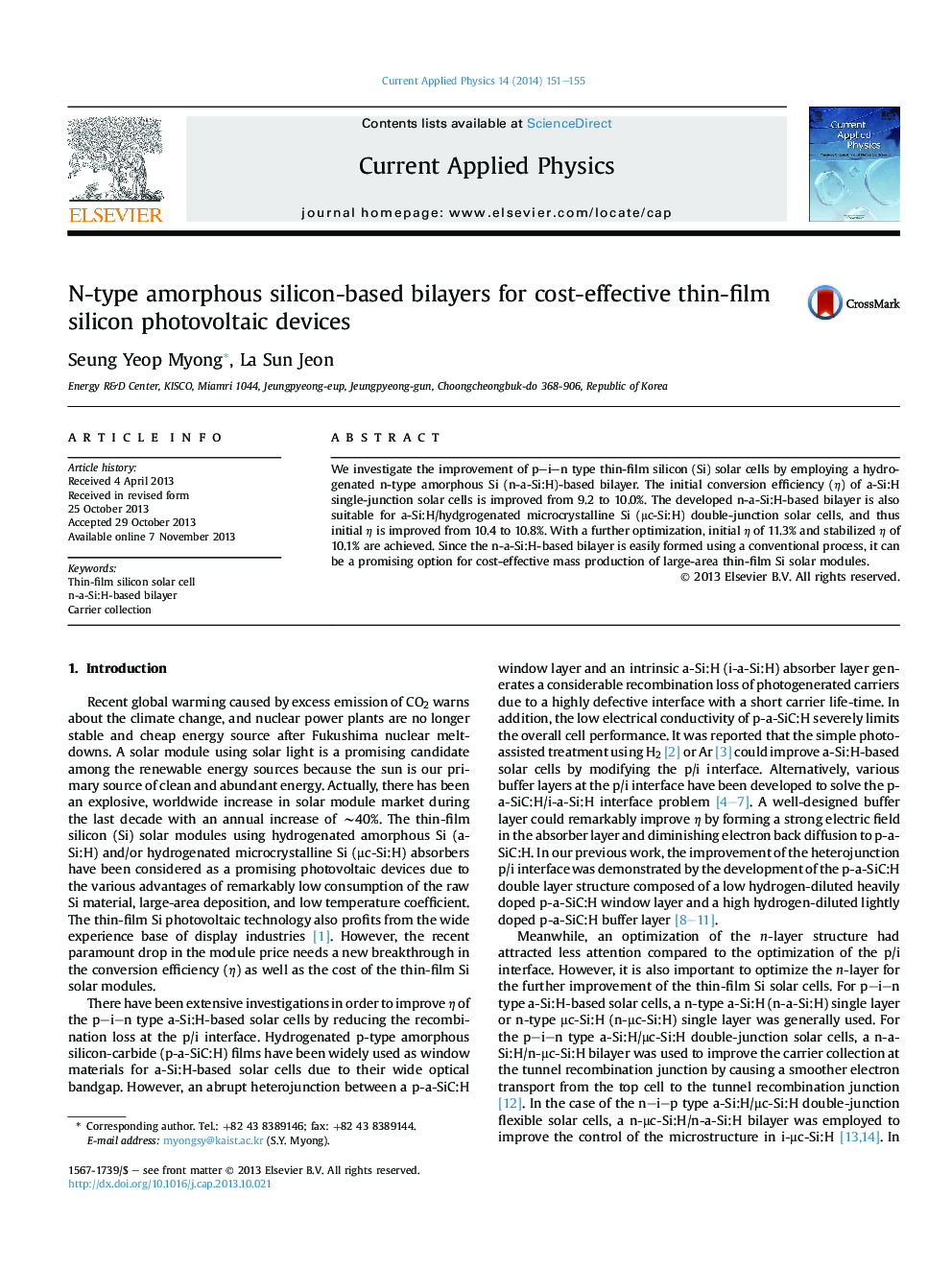| Article ID | Journal | Published Year | Pages | File Type |
|---|---|---|---|---|
| 1786707 | Current Applied Physics | 2014 | 5 Pages |
•We improve p–i–n type thin-film silicon solar cells by employing n-a-Si:H-based bilayer.•The bilayer consists of low hydrogen-diluted n-a-Si:H and high hydrogen-diluted n-a-Si:H.•The bilayer leads to a fairly good spectral response of a-Si:H solar cells with a high FF value.•The n-a-Si:H-based bilayer is also suitable for a-Si:H/μc-Si:H double-junction solar cells.•Consequently, initial η of 11.3% and stabilized η of 10.1% are achieved.
We investigate the improvement of p–i–n type thin-film silicon (Si) solar cells by employing a hydrogenated n-type amorphous Si (n-a-Si:H)-based bilayer. The initial conversion efficiency (η) of a-Si:H single-junction solar cells is improved from 9.2 to 10.0%. The developed n-a-Si:H-based bilayer is also suitable for a-Si:H/hydgrogenated microcrystalline Si (μc-Si:H) double-junction solar cells, and thus initial η is improved from 10.4 to 10.8%. With a further optimization, initial η of 11.3% and stabilized η of 10.1% are achieved. Since the n-a-Si:H-based bilayer is easily formed using a conventional process, it can be a promising option for cost-effective mass production of large-area thin-film Si solar modules.
